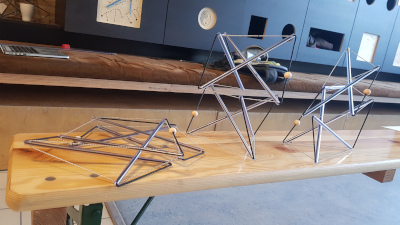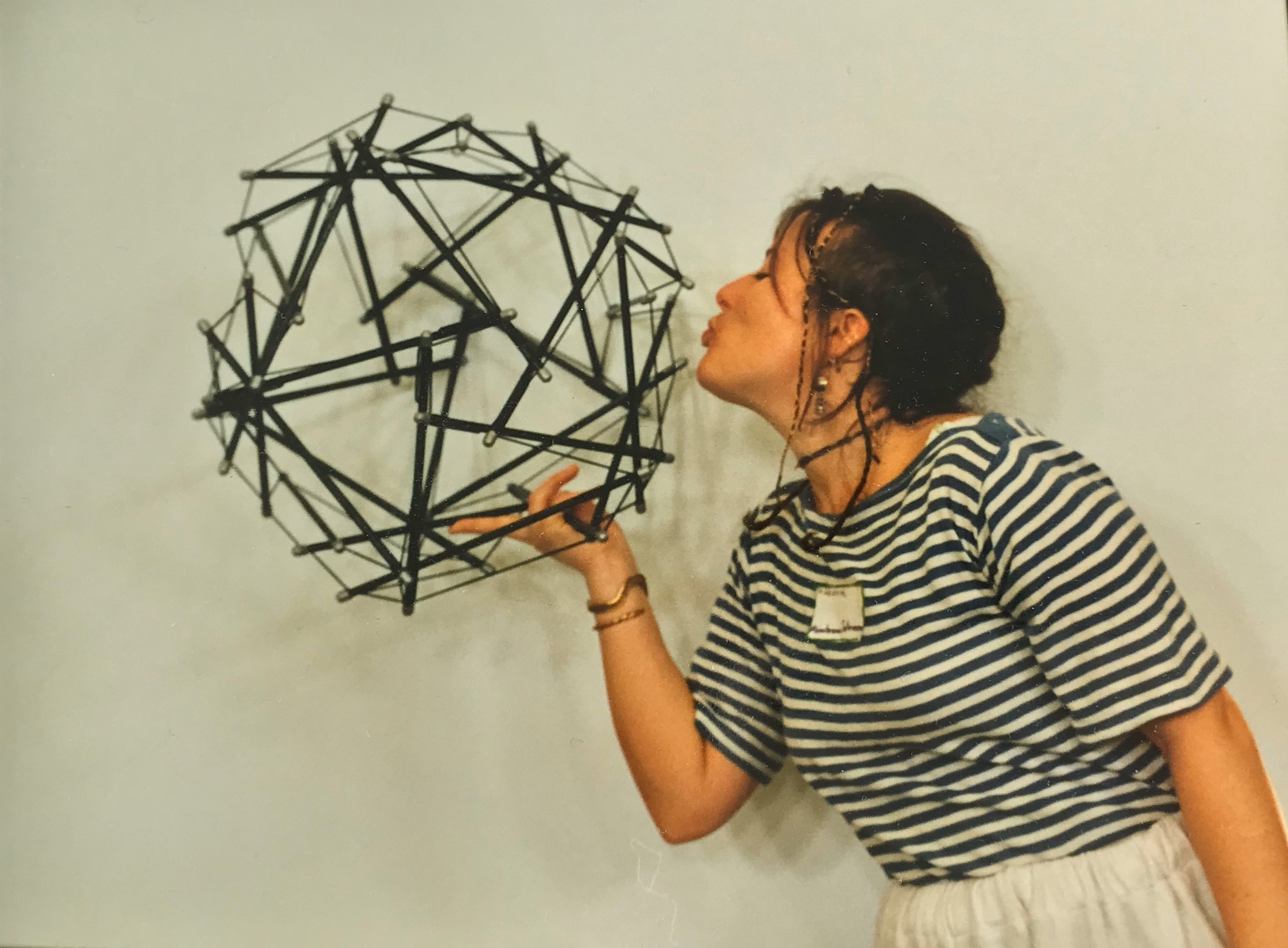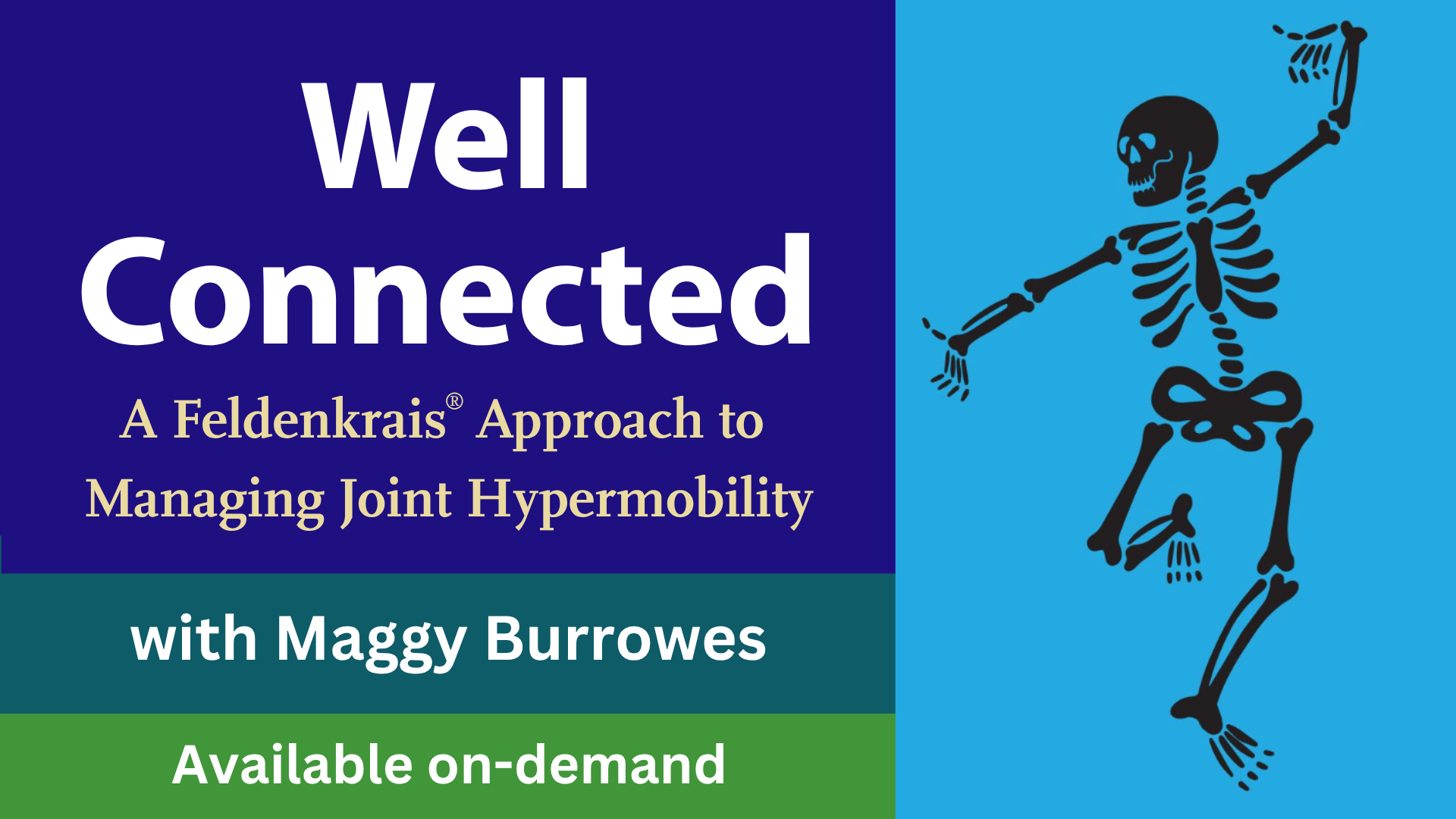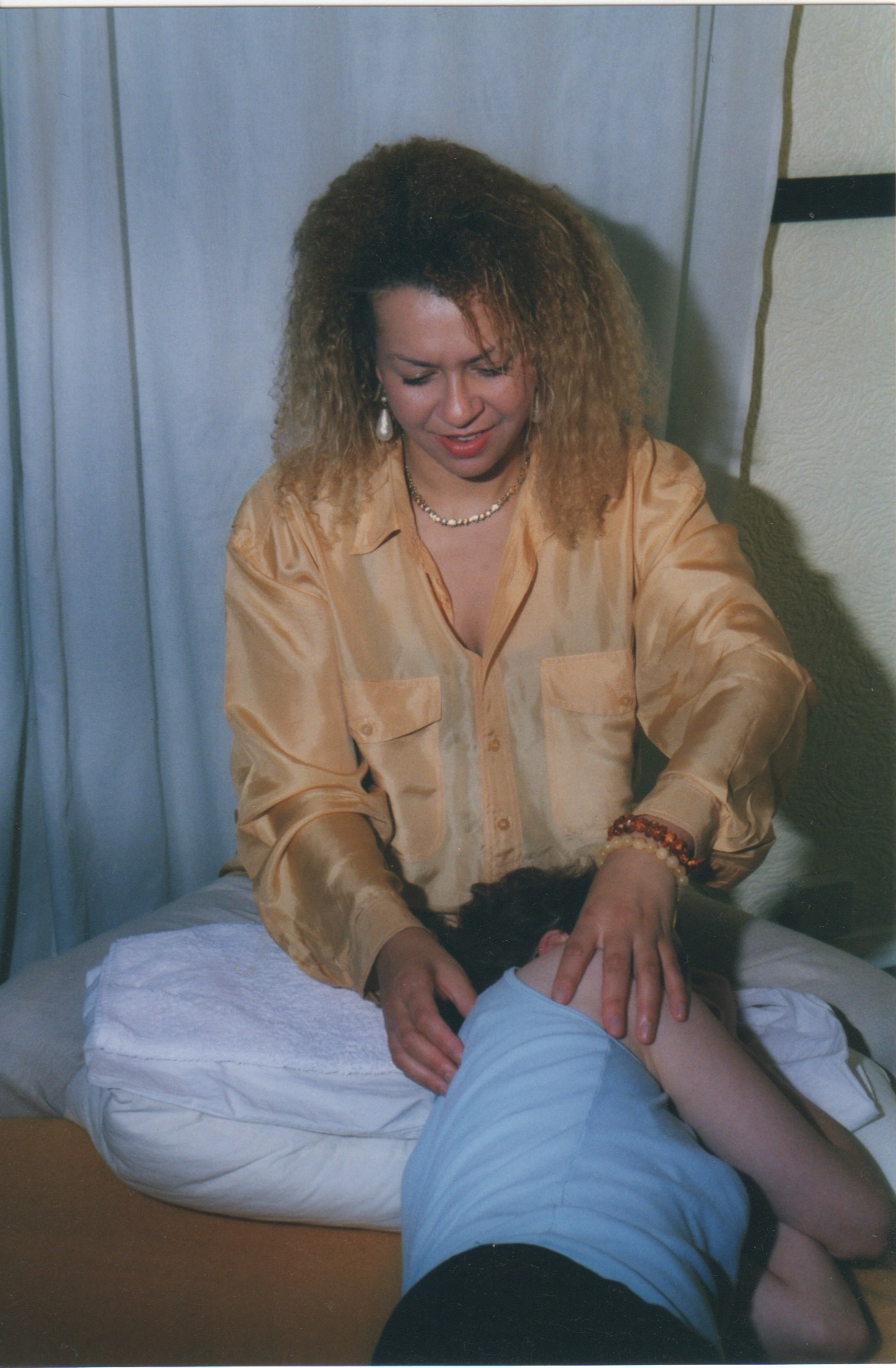Two Exciting New Paradigms for the 21st Century
“So long as what we do here is only about the movement, it is not important. We use the movements only to learn the process of self-organisation. You will find that self-organisation in social life, in marital life, and in yourself is what is important … not what is done on the floor. …Here, we learn to have the means to improve our life.”
Quote from a lecture “Habits and Invariants” given by Moshe Feldenkrais in the Amherst Training first year, July 15, 1980. Sometimes this talk is called “Both sides of habit”.
Neuroplasticity
Unless circumstances are exceptionally harsh, a new human emerges from the womb ready to learn all they need to learn to become a fully functioning adult. For the first few years of life this learning mode is ever-present, emerging spontaneously as part of the process of exploring both our selves and our surroundings, and this mode does not usually include much self-examination (although I suspect that early traumatic experiences may trigger more self-analytical behaviour at an earlier development stage, but that idea needs its own article).
The young human is innately a phenomenologist, a natural physicist, a curious creature that explores, and experiments, constantly making new discoveries, following their own impulses, all the while steadily absorbing the language, and mores (both overt and unspoken) of the people around them. Once a child’s understanding of language reaches a functional level, that understanding can become the key to more self-directed learning so that new skills are potentially more consciously acquired. Research reveals our slow transition from a dominant Theta brainwave state to a more Alpha dominant state, the chart below will give you some idea of these transitions. Many meditation methods aim to train us to achieve the Alpha and Theta states at will:

Although I do have some very vague memories of learning to write, I do not remember learning to read. I do remember how reading began to open up my understanding, and how exciting it was to go to the library and come home with new vistas to explore. Like many over-analytical children my book-learning soon overtook my physical skill development – my vocabulary took off in leaps and bounds, while my ability to perform leaps and bounds without injury remained at a rudimentary level.
I do remember the first time I began to think about learning to learn. I was reading a book off my mother’s shelves – my first forays into non-fiction were naturally shaped by her interests, which included a fascination with psychology. That book was called How Children Fail; it was written by John Holt, and full of recognisable truths about what it was like to be at school in the UK at that time (1970s). The examples Holt offered centred around the learning of mathematical concepts, and the book may have been one reason I became more positive about maths as a school subject. It was supposed to be difficult, and was understandably unpopular, and I was a ‘B’ student who worked hard enough to get ‘A-‘s, however at some point I became absorbed in the essential reliability of it, the fundamentality of it, the logic embedded in it. Someone showed me the magic of the nine times table, and I became enchanted with it.
I sought to understand it more deeply, and with hindsight I would now describe what I was doing as ‘embodying‘ the concepts I was being taught. It isn’t quite the right word, but it will do for now as a way to convey how my growing understanding and enjoyment manifested within me as a feeling-sensation rather than simply a mental shift. It was certainly a very different sort of knowing from the sort of understanding required to “show your working” – once I had a route to these more spontaneous answers I found writing them out laborious, and dull.
If embodied learning sounds a little vague, think of the physical thrill of excitement you experience when a new idea suddenly blossoms in your understanding. Small children naturally express their delight and satisfaction when new learning happens:
I was already a keen amateur epistemologist* when I discovered Feldenkrais, and so from my very first lesson I was deep in my element. I came to the Method with a particularly helpful set of baggage; a fascination with the power of slow movement to reverse physical limitations, thanks to Tai Chi, and a matching fascination with learning how to teach in a way that does not constrain the student’s capacity to learn, thanks to Idries Shah‘s writings on Sufism. At the time the subject I was keen to teach was singing.
Of course it is always easier to see the baggage other people are saddled with. Many of my fellow trainees saw Feldenkrais through the lenses formed by their previous training and experience – I could see the frustrations of the physiotherapists, and I took care to avoid the heavyhandedness of the masseurs, I am hypermobile, and easily injured if handled with too much intention to ‘correct’ me.
What delighted me was that we were learning an approach to teaching that was non-judgmental and non-coercive. There was no imperative to correct – or even to improve – the other person, only to get as much of the “plank” out of your own eye as you were able to, in order to meet them where they were, non-judgementally nervous system to nervous system.
The goal was to “walk the walk” – to be able to offer, in a gentle and friendly manner, a living example of what a life spent undoing all the unconscious mental convictions and physical limitations accrued in early life might be like. To remain constantly open to new learning, and to master, in an ongoing, life-long, step-by-step process, the ability to access at will one’s “beginner’s mind”.
In the last few years neuroscience has begun to popularise a word for this very human ability to keep the self open and ready to learn – that word is “neuroplasticity”, and it is still little-known, and even less understood.
It is as much a game-changer in the field of neuroscience as biotensegrity is in the fields of anatomy, “body-work” and movement training of all sorts.
Biotensegrity
During my Feldenkrais training I was introduced to the concept of fascia by Tom Myers. We were learning to teach people how to learn, and so understandably my trainers were not in full agreement about how much anatomy we needed in order to do that. Some wanted us to sound knowledgable when talking to the medical community, others were aware of how that might make us sound less like teachers and more like amateur physiotherapists, and of how misleading that might be for all parties concerned.
It was clear to me that our way of focussing our sensory awareness while we were actually in motion as our main learning tool was a process taking place throughout the whole “self”. I fully understood that we were using the image of the skeleton as a kind of metaphor, to make it easier to hold the image of our whole self in our awareness as we were moving. It was easy to generate a feeling-sensation of my skeleton in motion; easy to feel-sense the process of shifting the internal experience of weight-bearing out of my musculature and into my bones. At no point in my training did I think I was learning to teach people about levers and fulcrums, and – although it can be a very useful concept sometimes in discussion – neither did I believe I was learning to teach skeletal ‘alignment’.
I don’t remember much about Tom’s three talks (it was more that 30 years ago), and I only really started to get interested in biotensegrity once my own training was over and I got my hands on a Skwish toy ( a much smaller version of the big tensegrity model pictured above). I am an engineer’s daughter, and I have a love of moving models, but I realise now – thanks to John Sharkey – how little I had understood about the science of biotensegrity from interacting with this device. I used my Skwish as a model of the self-as-one-interrelated-whole, as I had learned from Moshe, and from my trainers. It gave me an easy way to demonstrate what I knew about the self to my students; they could see how a change of organisation in one part of the model was reflected throughout the whole, and that no one part was truly isolated from any other part. My first Skwish developed ‘posture’ problems – I now know that having cheap elastic parts is not ideal for biotensegral design – and all too quickly my second Skwish has gone the same way.
It is because of John Sharkey that my interest in biotensegrity has grown. I have been fascinated by the whole subject since the wonderful presentation he gave during the Feldenkrais online Summit in 2019. My interest in his work led me to the regular online biotensegrity “tea parties” that have been such a pleasurable aspect of being trapped in lockdown this past year. It has been truly exciting to be in the company of so many pioneering thinkers; so stimulating to see the way this lively community challenges out-dated and limiting paradigms in anatomical and movement science; so inspiring to see a new anatomical vocabulary of whole-self-ness developing.
Naturally I have begun to incorporate some of this language into my own teaching. At the moment that is still a “process in process” and my intention is to enfold this language into my practice in a way that is clear and beneficial to my colleagues as well as my students. I will be writing more about that soon.
I am aware that the world of fascia is an important area of understanding for Feldenkrais teachers. I say this mainly because we use movement sequences as a strategy for teaching deep truths about how humans function, and the more sophisticated our understanding of movement as a structural phenomenon becomes, the more coherent our teaching language will also become. I am also aware that it is valuable to recognise that science is proving just how effective it is to be light and non-intrusive with our touch, so that those who have trained in more corrective techniques can begin to unlearn them without feeling they are sacrificing something valuable.
Feldenkrais Is Different…
However I also think it is important to recognise that we are doing something very different from almost every other system that can be referred to as ‘bodywork’. I think it is all too easy to get excited about becoming more effective in how we use our hands, and lose sight of the bigger goal of enabling the self-development and self-maturation of those who come to us for our unique insight. This is ever more important, as there are a huge number of highly trained, highly effective manual therapists and movement teachers out there, and the field is growing exponentially. If we as a community do not raise a banner for our own difference – a difference that makes a huge difference – we risk submerging ourselves into a sea full of yoga teachers who are perfectly capable of incorporating mindful movement into their classes, and neuro-fascial bodyworkers who are successfully healing all sorts of people with their hands. We do neither, we teach self-awareness, self-maturation and self-mastery, and we need to be much, much clearer about that, because so few of the people I encounter in the huge field of “somatic embodiment” seem to know that we are neither movement teachers nor bodyworkers, but something else entirely.
Being Our Own Biotensegrity Model
Many in the biotensegrity community are keen to encourage the making of models, suggesting that this is vital for understanding the concept fully. This activity is not so appealing to dyspraxic folk like myself – the colloquial term (and the one my dad the engineer favoured) is “cack handed”, but you might also be familiar with the – somewhat poetical – “all fingers and thumbs”.
I treated myself to something beautiful and affordable instead; a lovely, simple model called Degrees Of Freedom, from the Pretenst company. As the designer intended, I did get a sense of what it would be like to form a model with your own hands, as it required gentle manipulation to bring it into its fully extended form:

Gerald de Jong – check out his website for more lovely models
So let me state for the record that I love models – I particularly love models with moving parts – but I do not need to make a model of a biotensegrity because I am a biotensegrity, and my own self has been my model from the first day of my Feldenkrais training. In a Feldenkrais Professional Training every trainee is learning to interact directly with the most sophisticated model of biotensegrity in motion available – their own self. And unlike the many – utterly charming – models out there to play with, this biotensegral being is complete – full of life, and awareness, and understanding, and purpose; constantly changing and self-organising, and with the ‘vital’ ability to interact with other biotensegral beings spontaneously in the moment. That is what the Feldenkrais training is for, and for most of us it was a wonderful experience, and one we yearn to share with our own students in our turn.
Gentle touch is the perfect tool…
As understanding of the huge potential of gentle touch in the field of bodywork grows – what Leonid Blyum calls the “unreasonable effectiveness of light touch”– it is important to remember that Feldenkrais teachers are not fixing, correcting, or healing people, we are always and only teaching people. It is easy to forget that for many reasons. Here are just a couple…
It is precisely because light touch works so well that the physical benefits are such a valuable ‘side effect’ of what we teach in Functional Integration lessons – nevertheless our intention is to teach people to be able to make these same changes to themselves at will; to become sensitive to their own biofeedback networks in such a way that they can adapt to new situations, develop new behaviours and learn to live their life in a less self-injurious and more self-liberating manner.
In addition, light touch helps to ease pain, and as self-employed teachers of something many people cannot pronounce, we quickly discover that most of the people we get to work with only choose us because we can help them with their pain. Sometimes it can take more effort than it is worth to explain that we are not in the business of ‘correcting’ posture or ‘fixing’ problems to the people who come to us for private lessons. The intersection between a Method so focussed on lowering effort with the struggle to both explain ourselves, AND to make a living can feel uniquely frustrating to the Feldenkrais community, as achieving more with less effort is so fundamental to our process.
More than anything else I want to make it clear that we in the Feldenkrais community do not need to update our techniques to accommodate the new anatomy, anymore than we needed to update our Method to accommodate neuroplasticity. Thanks to Moshe’s enormous capacity for ongoing enquiry and discovery science is still catching up with us. Just look at what everyone is saying – slow, aware integrated movement; developmentally informed movement; gentle, non-judgmental touch; mindful motion. Our techniques, methods and strategies for promoting new learning are present everywhere in the area of human wellbeing, even in more modern medically-orientated systems such the constraint-based approach to improving arm function after brain injury.
My own belief is that Moshe’s insights into the importance of the child development process for achieving full maturation means that we are still at the forefront of what is possible for those experiencing neurologically-centred child development issues – even those conditions that are not yet fully recognised as having a developmental element.
I am certain we need to embrace our own new paradigm of neuroplasticity in the field of human development in same enthusiastic and pro-active way the biotensegrity community are building understanding of their theoretical models in the anatomical field – and we need to continue to talk about Moshe Feldenkrais and the astonishing breadth of his discovery and insight with the same positivity, warmth, and appreciation that the biotensegrity community show for their own pioneer and “founder”, Stephen Levin.
We have our own paradigm shift to orchestrate, our own ‘structural revolution’ to manage, and I have a lot to say about that too, so more long, wordy articles are on their way…
*I am aware I am using “fancy” words without stopping to define them, so do click on the link provided if a word is unfamiliar to you…
Addendum: the photograph at the top of this article is of the lovely Mariamne Wulfn, kissing a tensegrity model that featured in a talk at her Feldenkrais training in Sussex (1990-94 – the second in the UK, which began the year mine finished). Mariamne is now a highly accomplished and experienced practitioner in multiple disciplines, based in Cape Town. To find out more about her work have a look at her website: Shamanessence




